Piolets d'Or Announces the "Significant Ascents" of 2023
This list of 68 climbs is effectively a "long list" used to select nominees of the prestigious alpine award.
From working in telecommunications to jumping out of planes, Sajid recounts his wild journey of chasing his dreams, and what got him there.

It’s very common for someone to ask, “what do you do?” And I often hesitate to answer this question. I’m not sure if they’d be more excited to know that I’m the creative director for a children’s product brand or that I’m a professional gravity tester.
I don’t think I can pin-point exactly how it all started in my head, but I’m sure there was a big influence from the TV shows and cartoons I watched back in the 80’s and the 90’s. To give you a few examples, I watched a lot of shows on Discovery and Nat Geo that showcased adventure travel and when it came to cartoons, shows like Centurions and Silverhawks fuelled me. The urge to fly freely in the skies or transform into a flying object was incepted. It was a sweet coincidence when just a few years ago a school friend of mine shared an image on Facebook. It was a note I had scribbled in her diary under the question, “What would you like to be when you grow up?” My answer to that was – A Skydiver. (This somewhat makes me believe in the power of the subconscious mind.)

I had to be the well-behaved child in the family.
I was born in Bombay, India, but raised in Kuwait for the first 7 years of my life. That’s where my family and I witnessed the Gulf War in 1990 and had to head back to India. Since then, I was raised in Bombay along with my older brother. We grew up listening to our dad’s stories of his sailing days in the merchant navy. My brother and I were totally enchanted by them, especially the details he would mention about Okinawa, Japan—a place where he sailed frequently. These stories inspired us as kids to have our own adventures someday. After moving back to India, I found it easy to get into the schooling system in India, but my brother faced a lot of challenges. Since he had decided to be a rebel early on, I had to be the well-behaved child in the family.
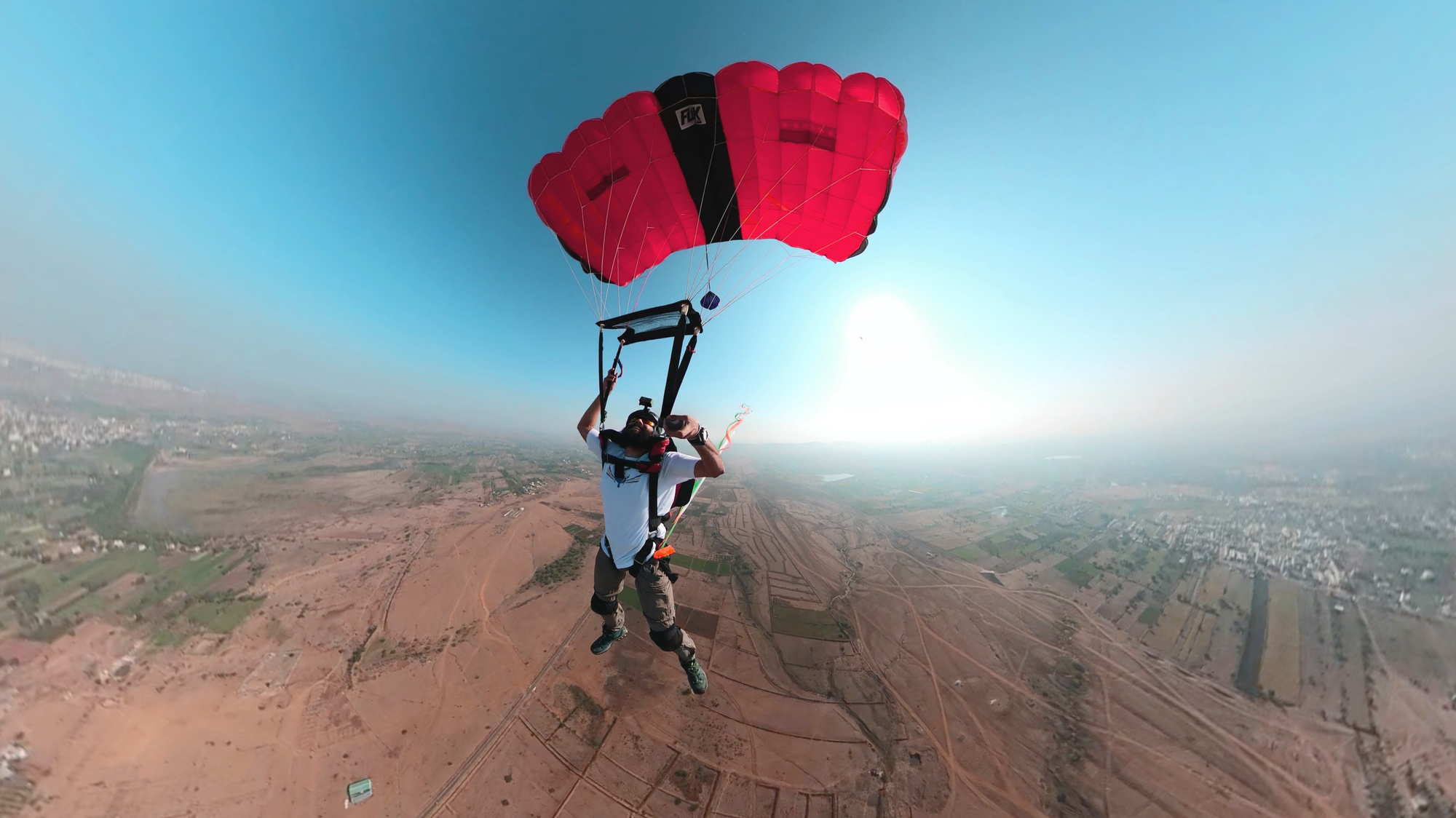
The usual, traditional formula for success was etched early on in my mind—to get good grades in school and college, get a higher degree, get a job, marry, get a house, have kids, and so on. After graduating from an engineering college in Bombay, and working there for a year, in 2007 I decided to head to the USA for my master’s program in telecommunications. I went there with the mindset of branching out and exploring my life (more than what I was told I could at home). It was here where I got to be a part of various outdoor clubs. Since Syracuse got a lot of active military students, I became good friends with a few and my exposure to the outdoors increased even further. I graduated from Syracuse University and ended up with a job in Philadelphia as a telecommunications/network engineer. This was towards the end of 2008. With the money I saved from my internship I decided to sign up for a tandem skydive in San Francisco, California, along with a family friend. But due to flaky weather, we couldn’t jump. I had a few more days left in my vacation so I decided to try once more around Los Angeles. I made my first tandem jump from 18000 ft in Santa Barbara. I then thought it was a lifetime experience!
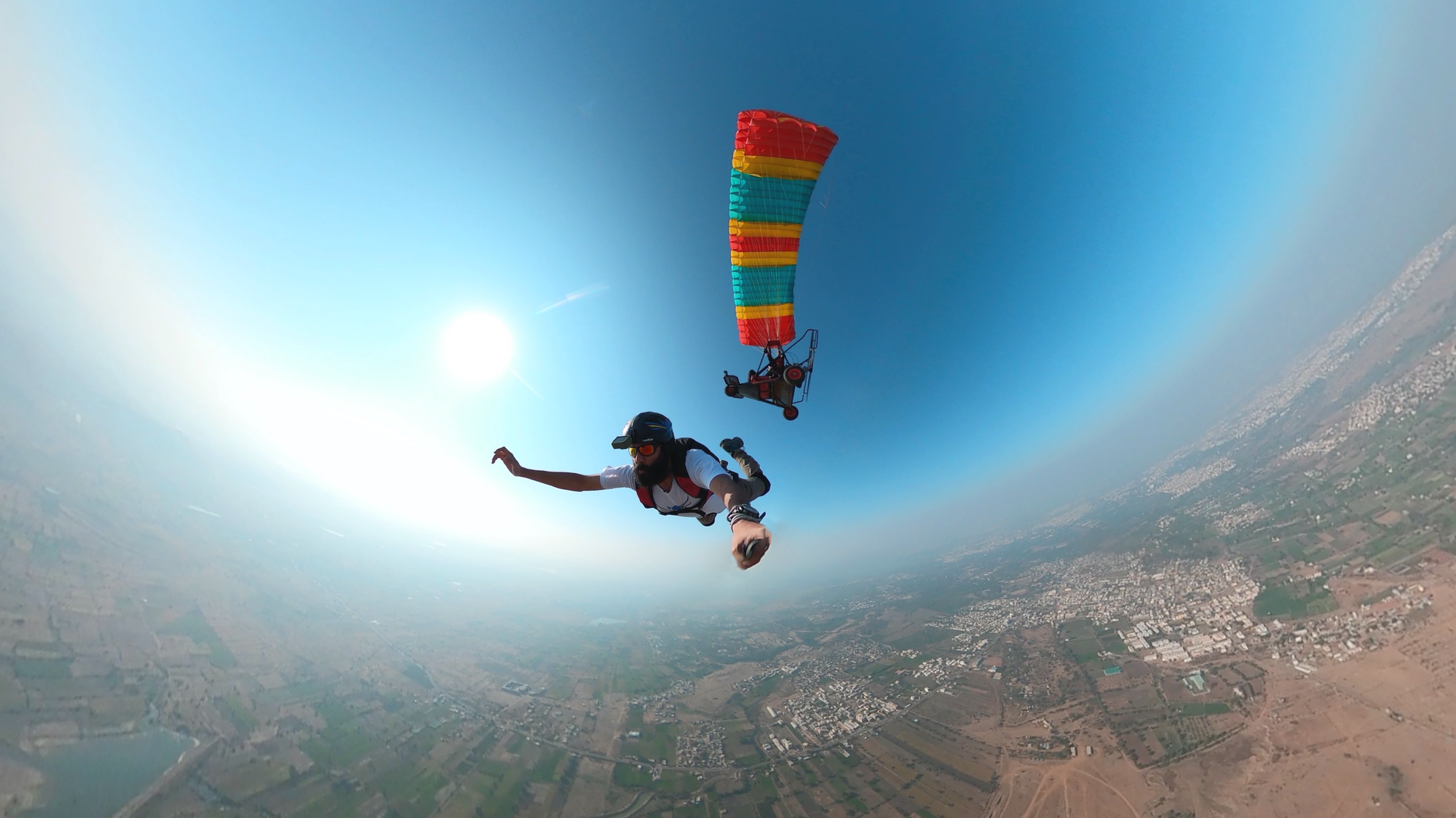
At any point you look up in the sky, you’d see at least 40-50 canopies.
Philadelphia is a wonderful city which has the vibes of a big metropolis but runs at a slow pace. With the Schuylkill river flowing through the heart of the city, you can run, bike, or even row and dragonboat race. I started doing exactly that. Living in this city further enabled me to chased my dreams of outdoor adventure. When I resumed office in 2009, during a casual chat with a colleague, I realized that I could get a skydiving license. I was surprised as I had never known this before. I went home and searched for the nearest dropzones around the area where I lived. That’s how I stumbled upon this small but super friendly place called Keystone Skydive Center. I signed up for an AFF (Accelerated Free Fall) course. This is the quickest way to learn skydiving where they first train you with emergency procedures on the ground along with proper body position. In the first few jumps, there are two instructors who jump with you. The number of instructors gradually decreases as you advance. This training program can be easy and quick if you train for a few minutes in a wind tunnel, since you can nail your body positions rapidly in them. But similar to the course, it’s not a cheap solution. Back then we didn’t have wind tunnels (flying simulators) around where I was living, so it took me a while to figure out the medium of the sky.

I’d try to jump every now and then over the weekends depending on the weather, while balancing work and other activities. As winter was approaching in Philadelphia, it would get really chilly at higher altitudes. Along with a friend and colleague of mine, we decided to head to Eloy, Arizona, which is the mecca of skydiving. This was the first time we were at such a huge dropzone operation. At any point you look up in the sky, you’d see at least 40-50 canopies. The airplanes flew one after the other spilling jumpers non-stop. It was here we met a few skydive legends and athletes from different disciplines of the sport. There were skydivers from different parts of the world and different walks of life. This place further increased my passion for the sport and the community.
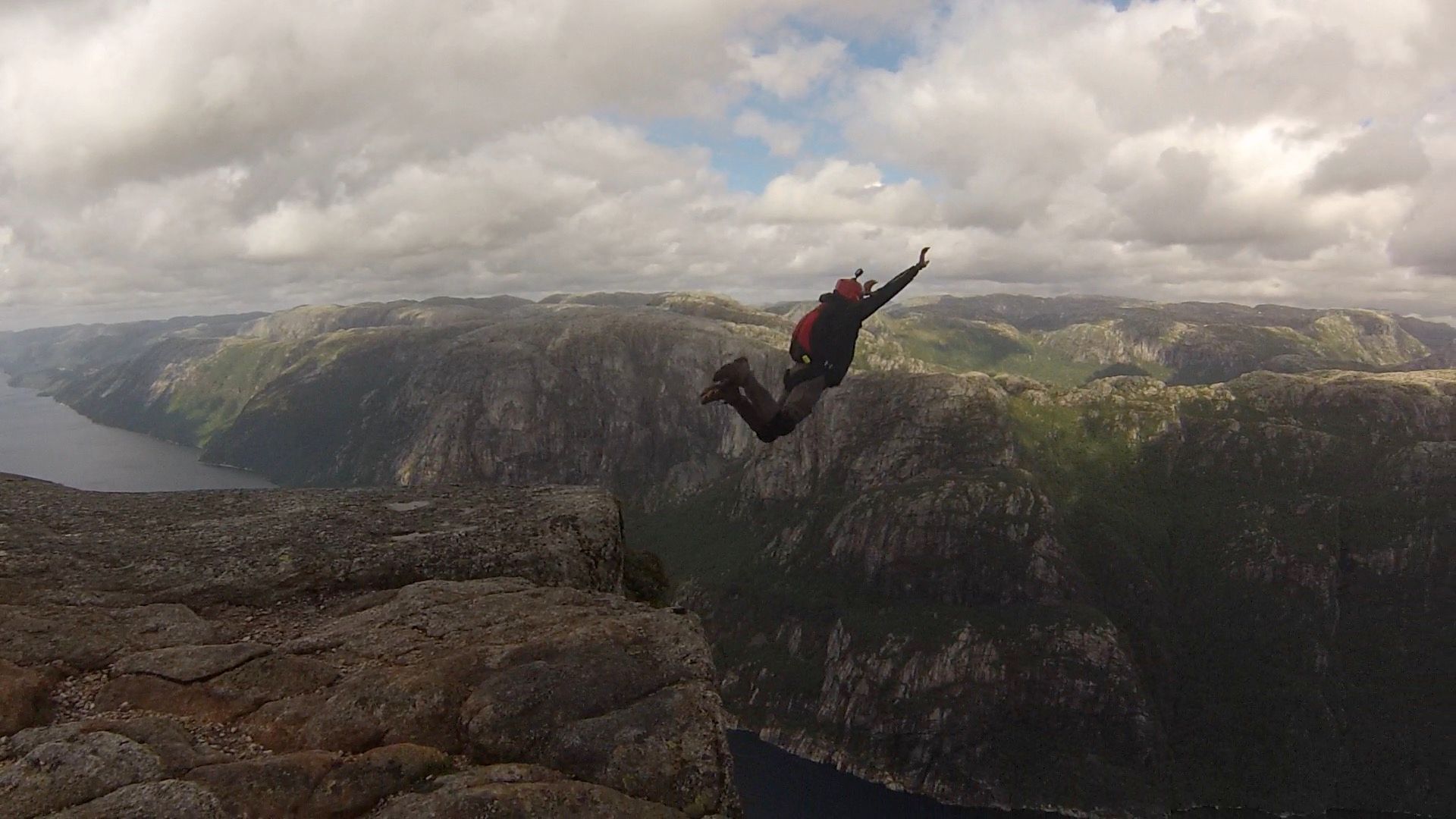
For everyone, success is a tried and tested formula.
Towards the end of 2010, I had decided to move back to India for good. I loved the sport so much that I decided to invest in a skydiving rig (parachute system). I left USA in April 2011 with not much of a clue as to what I would pursue in India. Skydiving as a sport wasn’t big in India (due to the high setup costs, air clearances and not many people choosing it as a sport). I did a search online and came across few skydiver profiles—Lt. Col Satyendra Verma and Archana Sardana who were kind enough to explain to me the scenario in India. It didn’t look too bright then. With the savings I had, I decided to travel for skydiving. I made trips to Dubai, Thailand, South Africa and skydived wherever I traveled. My experience and network in the sport kept increasing. I knew then that corporate life is not meant for me, so along with a good friend of mine we set up a business of digital content creation for businesses and schools. The business helped me sustain skydiving as a hobby for the next few years. I must say that as an entrepreneur it was extremely challenging to work and save enough so that I could travel and skydive. It wasn’t easy convincing my family either. For everyone, success is a tried and tested formula, where you’re judged by what work you do, what title you have, what car you drive, etc. Whereas I was out there chasing experiences.

In 2016, the World Wingsuit Championship was planned in Zephyrhills, Florida, in the month of October. So, I decided to train and participate. I was being too ambitious, as I realized later. During my frequent trips to Dubai, I came across the name of a dropzone called Lodi in California. It was the cheapest dropzone one could jump from in the world. I decided to head there for my training. I signed up with a wingsuit coach, Chris Geiler, who happened to be the world champion in the sport. I told Chris about my grand plans, and even though he thought I was crazy, he instilled confidence in me and showed optimism. He’d make me ready to fly with a wingsuit at the event in the period of one month. For the first few days I focused only on belly jumps and track jumps. I also had to read a lot on glider dynamics and the physics of flight. To be honest, I feel it’s extremely important to understand the theory behind all these sports rather than blindly trusting your equipment. For my wingsuit training I had borrowed a suit from Satyendra Verma who was kind enough to lend it. It took me a while to get used to the wingsuit, as it wasn’t designed exactly for my body type. In the end we managed. I was ready to fly for the competition, but in my mind, I knew I wasn’t ready to compete.
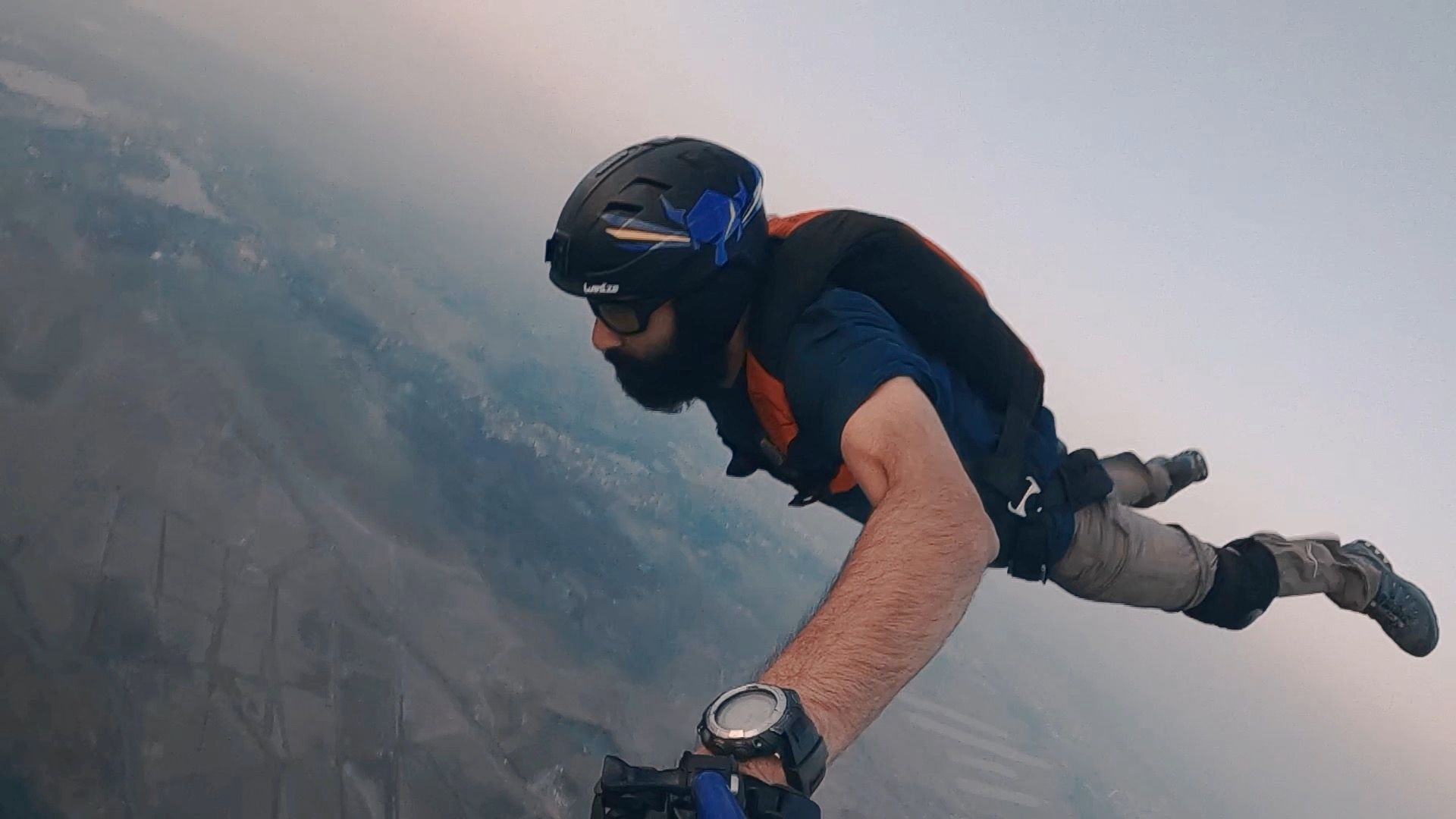
You no longer needed an airplane to carry you to the skies.
After reaching Zephyrhills, and meeting all the athletes there, I realized I didn’t want to enter the competition just for namesake or to boast about it later. The entry fee was around $1000, so I decided to make better use of it, by getting more wingsuit jumps. During the event gathering, I met other Indian wingsuit flyers as well, like Rameshwar Jangra and Udit Thapar. While the athletes would train, I’d go out for wingsuit flights with other friends I made at the dropzone. My coach Chris was also present, training really hard. One day, I realized he was a bit bothered and I found out that his electronic GPS device that records flight data had stopped working. Luckily I had ordered a new device for my training, so I offered him mine. I’d do it for anyone else as well. Chris ended up winning the championship.
Post the event, I went back to Lodi with wingsuit experience and a lot more jumps. At Lodi, I met a few BASE jumpers. Frankly speaking, ever since I started skydiving in 2009, BASE was never on my mind. In fact, many skydivers look at BASE as the ‘Dark Side of The Force’. It used to be a taboo to talk about it at dropzones (it probably still is at some places). Until then I never watched BASE jumping videos, as I was consciously staying away from them. But meeting these people changed my mindset. I saw an opportunity for self-sustained jumps, especially in India. You no longer needed an airplane to carry you to the skies. I became good friends with a Swedish group out of which one happened to be a BASE jumper. His name was Richard Lidström. Through our conversations Richard suggested that Norway is one of the best places to train for BASE jumping since the cliffs in the fjords offer an altitude of up to 3000 ft. That there is a place known as Stavanger BASE Klub which offers BASE jumping courses once you have over 200 skydives. Along with Richard, I planned a trip for June 2017 where we were supposed to meet in Norway, jump together, and do a road trip to Sweden for another skydiving event. My trip to Lodi was definitely a game changer which helped me understand newer perspectives towards aerial extreme sports. I had newer goals set for the future which I wouldn’t have discerned otherwise.
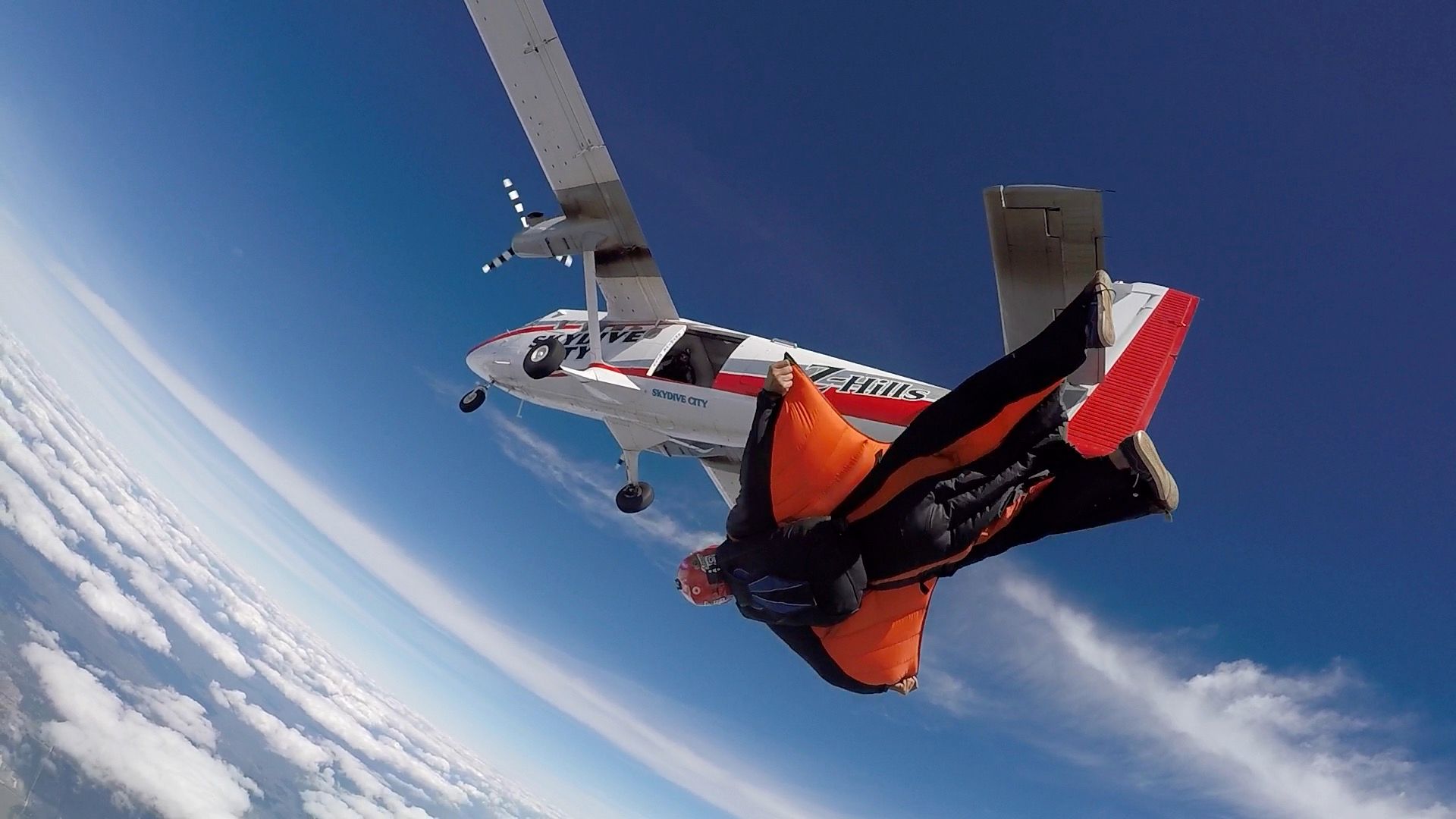
I had dedicated my first BASE jump to Richard Lidström. It was a milestone in my life.
I was back in India, preparing for my travels to Scandinavia in 2017. Until then I kept myself busy with content creation projects for startups and corporates which were enough to sustain me through the year. As I was gearing up for my trip, just a few weeks prior to my departure I read a post on Facebook which shattered me from within. The person who guided me towards my BASE journey had passed away. I honestly didn’t know how to cope up with the news. I wasn’t sure if pursuing my BASE journey was the correct option then. My friend in France suggested that I continue the journey and that she’d join me in Norway as well as in Sweden where we’d visit Richard’s family. When I reached Lysebotn, Norway, I met a few of Richard’s friends as well as a documentary filmmaker who was following Richard and was supposed to meet him here. I trained on the ground for the first two days along with some reading and understanding of BASE equipment. (Skydiving parachute systems have two parachutes along with an Automatic Activation Device, AAD, which will deploy the reserve parachute in case the main has deployment issues. In BASE there is only one parachute and no backups). The first jump was definitely challenging especially with all the thoughts of life and death flooding my mind. The simplest yet most effective thing to do on the edge is to breathe deeply and exhale. With that you leap off the edge and free fall for the next 15-18 seconds focusing on where you want to fly by maneuvering your body. Once you see the landscape becoming uncomfortably huge, you know it’s an indication to deploy. I had dedicated my first BASE jump to Richard Lidström. It was a milestone in my life. My friend and I later met Richard’s family in Vimmerby, Sweden, who were extremely warm and welcoming. I realized I was looking for my friend in them while they were looking for their son in us.
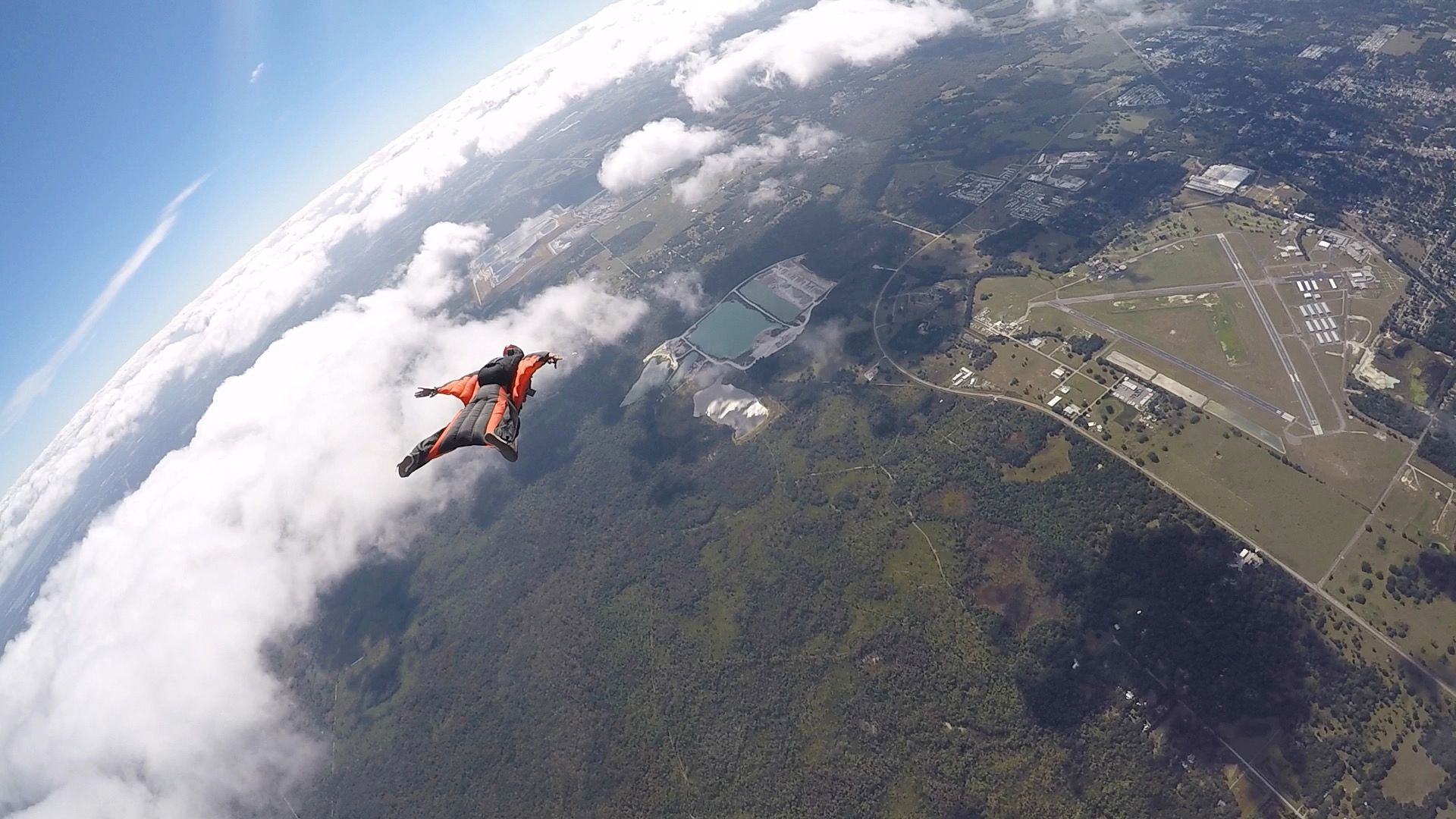
I came back to India with new skills and ideas in my head. I wanted to explore the cliffs in the Sahyadris, the mountains in the Indian Himalaya, and the skies of different cities. I found BASE jumping as a medium of creative expression. I wanted to showcase a different India not just to my people but to the whole world. I started inviting my friends from other countries to come and travel and explore BASE spots in India. That’s how we ended up jumping off Konkan Kada in Maharashtra and Tranda Dhank in Himachal Pradesh. Over the years these BASE jumping exploits further connected me with the Powered Para Glider (paramotor) community in India. They welcomed me as part of their circle and wherever they went, I’d follow. We planned jumps over grounds with thousands of people, we set Indian records and we hope to keep doing the same in the future. It developed into a symbiotic relationship, where they’d help me hitch a ride into the sky and I’d help showcase content about their sport and community. They have helped me find the answer to sustaining skydiving and BASE jumping in India. And to be very frank it’s not the act of jumping, free falling and flying a canopy that attracts me to the sport—it’s the community that I’m a part of, be it in India or abroad.

I’m often asked by my social media followers about how to get into the sport and sustain it. There’s no simple answer to that. It is an expensive activity, so find a job that enables you to work towards your flying dreams. Towards the end of 2018, I stumbled upon an opportunity, along with three other friends and co-founded a brand named Luma World where we design gamified educational products for children of a primary age group. This keeps me busy and motivated throughout the year, but I still do get my freedom to explore the skies whenever possible. 2020 definitely started with a bang, especially with GoPro India appreciating my work in Aerial Extreme sports, a tourism initiative in Chikmaglur, Karnataka, a few more paramotor explorations and some big travel plans to Norway in June. Although I’m not really sure how the year will pan out, with the pandemic going on. Until then I’d say, ‘You can take me out of the skies, but you can’t take the skies out of me!’
2nd best newsletter in the universe